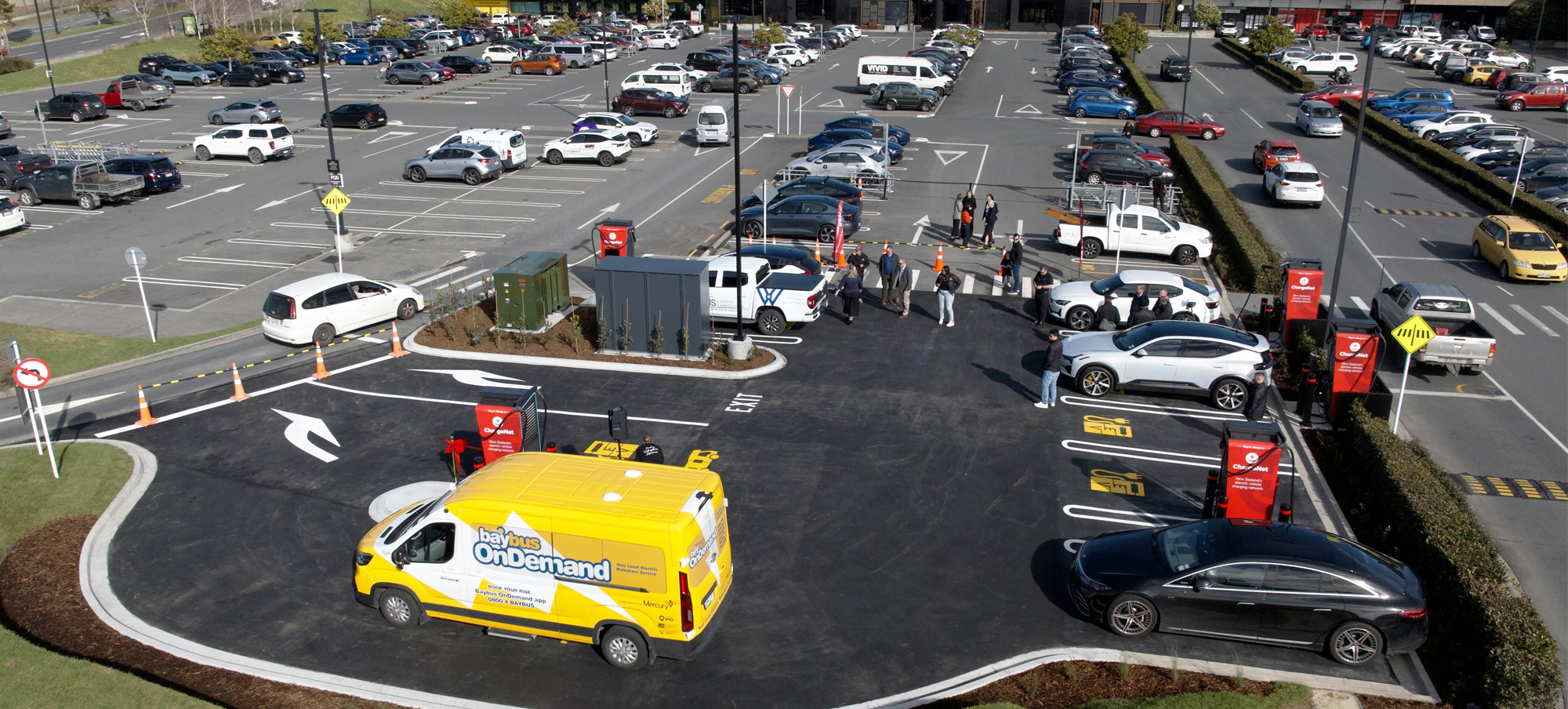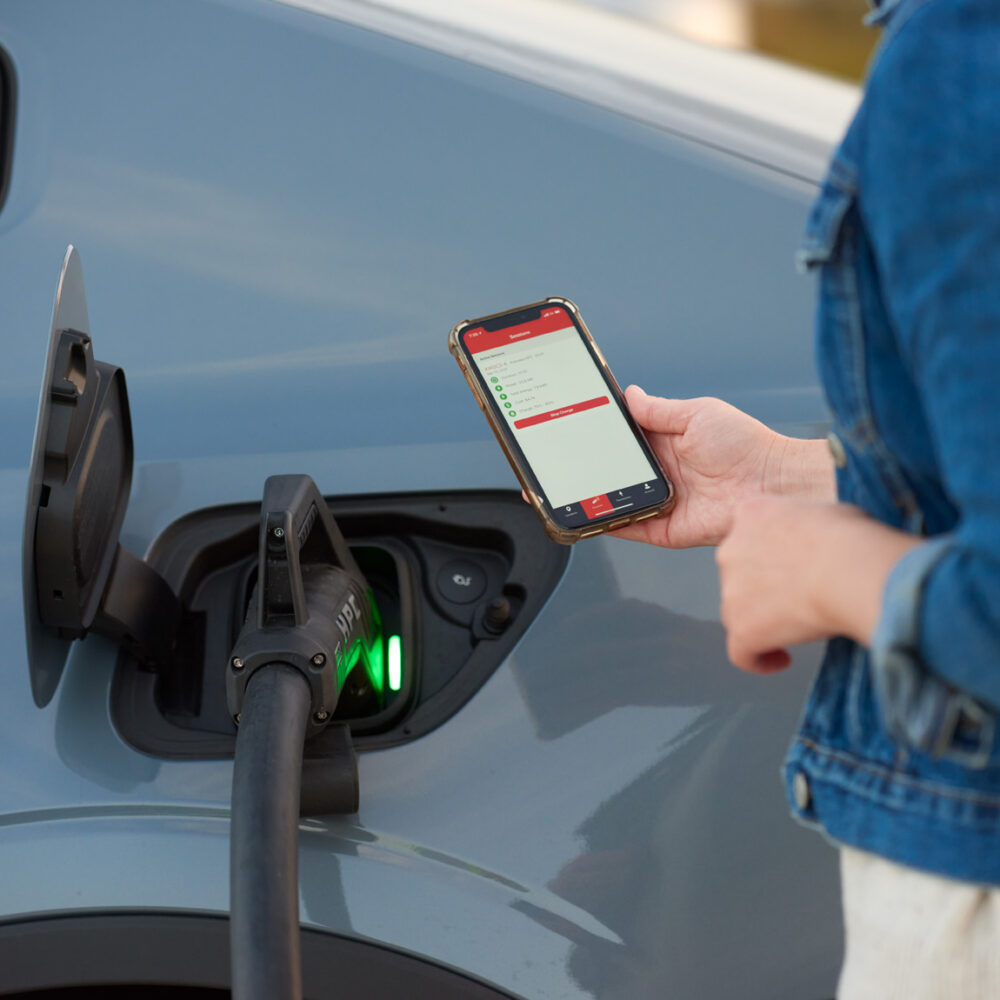
2 August 2024 – ChargeNet meets increasing demand for EV-charging in New Zealand with 10-point charging hub in Tauranga Crossing
ChargeNet, Aotearoa New Zealand’s nationwide EV charging network, is flicking the switch to turn on New Zealand’s largest-ever EV charging hub at Tauranga Crossing in Tauranga today.
The $1.8 million charging hub can charge up to 10 vehicles at one time – more than any other charging hub in New Zealand – and can add up to 300km of range within 20 minutes – enough to power most EV journeys to Auckland or to Hamilton and back. The hub is designed to meet the growing demand for EV charging with its installed charging capacity.
ChargeNet CEO Danusia Wypych says that Tauranga Crossing is a destination where every part of life intersects, making it a critical location for charging infrastructure.
“Our data show that the new charging hub is ideally positioned to support charging demand and meet our customer’s needs, offering fast and convenient charging alongside amenities for drivers on the go. Tauranga Crossing is a point of convergence for the Bay of Plenty, hosting approximately 26,000 vehicles per day on average. This strategic location is expected to significantly enhance charging accessibility, especially given it provides two “pull-through” charging bays that provide access to electric vehicles towing trailers, campervans, and small electric trucks,” she says.
Danusia Wypych says as well as EVs being fun to drive, that the electrification of light transport remains the most effective way to rapidly cut emissions, and demand will continue to grow. Recent market research by Vector indicates that nearly half of the respondents are still considering purchasing an EV or electric hybrid within the next two years, even after the removal of EV subsidies.
“The Government’s goal to build 10,000 public electric vehicle fast chargers by 2030 is the most tangible action they’ve made to meet our decarbonisation goals. EV sales in New Zealand have moved beyond the tipping point at which uptake is exponential. A temporary slow-down in EV sales from recent changes in policy direction was predicted and will be short-term. It has been a tough year for many New Zealanders and businesses, but market research shows many still have their eye on how they can take advantage of an EV in their day-to-day life.
“Building such significant capability at Tauranga Crossing reflects the fact that EVs continue to be an attractive proposition for all New Zealand drivers, from an economic perspective as well as reduced emissions. By providing more ChargeNet chargers at locations where drivers need them, we’re building confidence in the network for everyday EV drivers and helping to get more Kiwi drivers into EVs by building their trust that the EV-charging network can support them,” says Danusia Wypych.
The challenge, says Danusia Wypych, is for public charging infrastructure to support the increasing uptake of EVs.
“We are already well behind the pace, and we need to catch up quickly. Our ratio of public chargers per EV is the lowest in the OECD. Enabling investors in EV chargers to connect to the country’s 28 local electricity networks quickly and on effective terms is essential for getting more EV chargers on the ground at the pace we need to. We’re waiting to hear more detail on how the Government will use its learning from the Ultra Fast Broadband model to partner with private capital. The effectiveness of the model was based on partnering with the businesses and sharing the risk around the future of utilisation.
“Tauranga Crossing is an example of how private and public funding can work together to build high-impact infrastructure that meets the needs of the public. This new charging hub is a part of our wider plan to grow our network to 600 charging points – with a variety of hubs and destination chargers around the country designed to meet customer demand that is set up so capacity can be ramped up to accommodate increasing demand and utilisation as the number of EVs on the road increases,” she says.
Tauranga Crossing Centre Manager, Janet Vincent, says that Tauranga Crossing is proud to support a greener future for Tauranga and enhance the convenience and enjoyment of their customers’ visits.
“Tauranga Crossing is thrilled to announce the launch of ChargeNet’s charging hub at the shopping centre. This exciting addition provides our community with a seamless experience, allowing them to conveniently charge their electric vehicles while enjoying our vast range of shopping and dining options.” Vincent says.
Danusia Wypych says that the charging hub has enabled the company to strengthen its network capacity in Aotearoa’s most densely populated region – the Golden Triangle, comprising the area between Tauranga, Hamilton, and Auckland. The area is the home of over 50% of New Zealand’s population. The benefit goes beyond developing more sustainable transport: driving an EV has clear economic benefits.
The new charging hub is jointly funded by ChargeNet and EECA, with co-funding from EECA’s Low Emission Transport Fund (LETF).
EECA GM Delivery & Partnerships Richard Briggs says, “This is a great milestone in the development of the public EV charger network. Tauranga Crossing is the first hub we have supported to go live, with more due to come online in the coming months. Having more chargers in key places means less anxiety about queueing for drivers, and more options for charging up on longer journeys or when out and about locally.”
The charging hub is powered by ChargeNet’s electricity partner, Ecotricity, who is NZ’s first and only climate positive certified electricity provider. Ecotricity supports 100% renewable energy by purchasing from wind, hydro, and solar only.
For more information on ChargeNet and to find a fast-charging station near you, please visit charge.net.nz/map.
